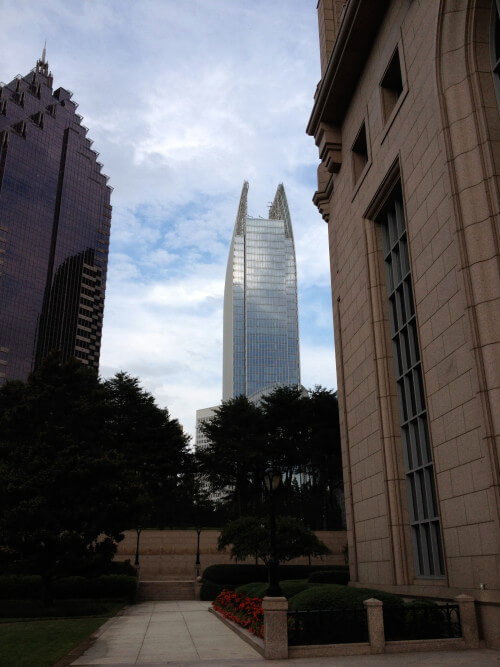
Recently, Disney began litigating against a solo-artist DJ named DeadMau5 for his alleged trademark infringement of the Mickey Mouse image. DeadMau5 wears a recognizable mouse hat with large ears and large “X”s over the eyes—hence the name “dead mouse.” This got me thinking…I haven’t actually written a blog on Trademark law yet! Hence, for the next couple of weeks, I’ll be walking you through the basics of Trademarks, so that, ultimately, we can judge whether Disney really has a case.
A trademark is a type of intellectual property that encompasses brand names and logos. They are industry-specific, too, so there are separate trademarks held by separate companies. For example, there’s a separate trademark for Delta (the airline), and Delta (the plumbing company). Different trademarks are awarded to the same company, as well; Nike has a trademark for the name “Nike” and another trademark for their iconic “swoosh” logo that’s printed on their products.
Assuming that a trademark is registered and awarded from the United States Patent & Trademark Office, or USPTO for short, the trademark owner can prevent other businesses from using their brand name in a way that is “likely to confuse” consumers (i.e. those sidewalk vendors who try to sell knock-off Rolex watches and designer purses).
Without trademarks, all marketing efforts towards brand recognition and brand loyalty would be worthless because it would be easy for new, spam or sham, companies to steal valuable brand names that consumers think highly of, and by doing so, steal their customers. Put simply, trademarks make marketing worth the time and money that is put into it.
No one can trademark nouns that are in ordinary use. For example, you can’t register a trademark for “Laundromat” or “Hotel,” because the risk of trademark confusion is simply too high—no one would be able to tell the difference between your brand name and anyone else in the same industry. There is another practical consideration here as well; we don’t want to make some words “off-limits” for people to use. We would have lawsuits flying every which way if I could prevent you from saying “Restaurant” or “Shoes” in any advertisement or sales pitch.
But where this gets really interesting is when a trademarked term is used so often that it becomes a noun in ordinary use – think “googled”! When you say that you are googling something, you might be using the Google-branded search engine, but you might not. Other examples: can Unilever maintain the trademark for “Q-Tips” or Kimberly-Clark the mark for “Kleenex?” Probably, yes, but the complete market saturation of the products has made people refer to any brand’s version of “Q-Tips” as “Q-Tips,” even if they’re being sold by a different company. This is why companies spend a lot of time and money to prevent their trademarks’ “dilution.” Speaking of Q-Tips, check out what is printed in bold at the bottom of Unilever’s website:
Q-TIPS® is a registered trademark of Unilever and is NOT a name for just any cotton swabs. The Q-TIPS® trademark can only be used to refer to the specific cotton swab products manufactured and sold by Unilever and should not be used to refer to cotton swab products of other companies or to cotton swabs generally. Appropriate generic terminology for cotton swabs includes the terms “cotton”, “stick(s)” and “swab(s)”. Misuse of the Q-TIPS® trademark constitutes an infringement of Unilever’s exclusive rights in the mark.
Where you use your trademark is important. There are multiple ways to argue that you have a trademark in a courtroom setting. The first is to show that you’ve been using the trademark in a certain region. Let’s say that Bob has Bob’s Laundromat in Kansas, and has used that brand name for 5 years. If someone tries to setup shop 1 mile away from Bob’s Laundromat, and call it “Bob’s Laundry,” the original store owner has a good argument for trademark infringement by creating what we call “a likelihood of confusion;” the new laundromat is probably going to cause confusion among Bob’s customers and some might start going to the new store, thinking it’s run by their friend Bob (and Bob doesn’t even own it!). This argument is based on a what’s referred to as a “Common law” trademark claim, rather than using a trademark that’s registered with the USPTO.
The other way to prove a trademark is by registering your trademark with the USPTO, in their federal database. This database is industry specific (more on this below) and allows you to search for trademarks by name. The application process is fairly technical—you’ll need a lawyer to apply for you—but relatively cheap in the grand scheme of things. The USPTO currently charges $325 for filing a basic trademark application.
More on this next week, where we’ll finish up our discussion of Trademark law and decide whether Disney has a case against the DJ DeadMau5 or not.